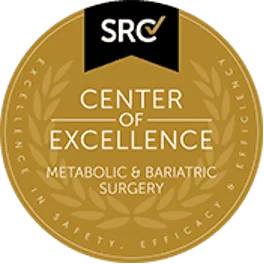What is Obesity?
Causes of Obesity
- Eating and exercising habits
- The genes you inherited from your parents
- How well your body turns food into energy
- Your surroundings
- Psychological factors
Consequences of Obesity
If you are severely, or morbidly obese may experience the following health problems:
Shorter Life Expectancy
Compared to normal weight people, obese people have a 50-100% increased risk of dying prematurely
Obese people are at more risk of:
- Diabetes (type 2)
- Joint problems (e.g., arthritis)
- High blood pressure
- Heart disease
- Gallbladder problems
- Certain types of cancer (breast, uterine, colon)
- Digestive disorders (e.g., gastro-oesophageal reflux disease, or GORD)
- Breathing difficulties (e.g., sleep apnoea, asthma)
- Problems with fertility and pregnancy
- Incontinence
- Psychological problems such as depression
Risks to psychological and social well-being
- Negative self-image
- Social isolation
- Discrimination
Difficulties with day-to-day living
- Normal tasks become harder when you are obese, as movement is more difficult
- You tend to tire more quickly and you find yourself short of breath
- Public transport seats, telephone booths, and cars may be too small for you
- You may find it difficult to maintain personal hygiene
Treatment Options
Non-surgical intervention
Many people who are unhealthily overweight have tried various ways to lose excess weight. Hundreds of markets for slimming diets, cures and products are available. However, many studies show that diets and slimming aids rarely succeed in helping people achieve the desired result of long-lasting weight reduction.
In fact, many people who have tried dieting gain back more than they lost when they go off the diet.
Obesity Surgery
Obesity surgery is available for those people who have tried to lose weight with diets, exercise, cures, tablets or medicines without success.
Obesity surgery is designed to reduce the amount your stomach can hold and therefore decrease your appetite so you eat less.
Click here to find out more about Obesity Surgery from www.obesitysurgeons.com.au
Several Types of Obesity Surgery
There are several types of obesity surgery available; following is a brief overview on each of them. For more information please contact our practice.
Gastric Banding Surgery
Gastric banding is a procedure that restricts stomach volume, without the use of staples or cutting. Via laparoscopic incision, a soft band is placed around the stomach to form a small pouch with an opening to the rest of the stomach. The procedure is easily reversed; your doctor will simply remove the band via laparoscope.
The Midband gastric band as it is the simplest to install, the softest, with less post-operative pain and quicker recovery time (it could be as little as 4 weeks rather than the usual 8 weeks for other bands).
It is a soft silicone ‘belt’ that is placed around the upper portion of the stomach. The band is a smooth all in one construction, with an inflatable ‘balloon’ section that is connected by tubing to an ‘injection reservoir’. The reservoir is just below the skin and is easily adjustable by your doctor when adjustments are needed.
The band is placed around the upper portion of the stomach, dividing it into two parts. The diameter of the inner part of the band – the ‘balloon’ – is adjusted, according to how much weight you want to lose.
The Midband creates a feeling of fullness. It doesn’t interfere with the absorption of nutrients as some other procedures can. Weight loss is simply achieved by reduction of food intake.
BMI Calculator
Body Mass Index (BMI) is measure of body fat based on height and weight that applies to both adult men and women. BMI does not differentiate between body fat and muscle mass. Therefore, body builders and people who have a lot of muscle bulk will have a high BMI but are not overweight or obese.
Fat predominantly distributed around the waist is also a risk factor for health complications such as cardiovascular disease and types II diabetes. Fat predominantly deposited around the hips and buttocks doesn’t have this same risk.
Your BMI Result indicates
- Below 18.5 - UNDERWEIGHT
- 18.5 - 24.9 - HEALTHY
- 25 - 29.9 - OVERWEIGHT
- 30 - 34.9 - CLASS 1 OBESITY
- 35 - 39.9 - CLASS 2 SEVERE OBESITY
- 40 and Above - CLASS 3 MORBID OBESITY
References
- The Australian NH&MRC
- National Heart Lung and Blood Institute
- National Institute of Diabetes and Digestive and Kidney Diseases
- National Institute for Health and Clinical Excellence
- Mini-Gastric Bypass Surgery
- Australian Institute of Health
- OSSANZ – Obesity Surgery Society of Australia & New Zealand Bariatric Surgery Weight Loss Surgery
- Royal Australasian College of Surgeons (RACS)
- ANZGOSA – Australia & New Zealand Gastro Oesophageal Surgery Association
- Ken Loi Dr. in Doctoralia
- Doctoralia Australia
- Covidien
- St George Private Hospital
- Kareena Private Hospital
- Gastric Sleeve Support
- ObesityHelp



